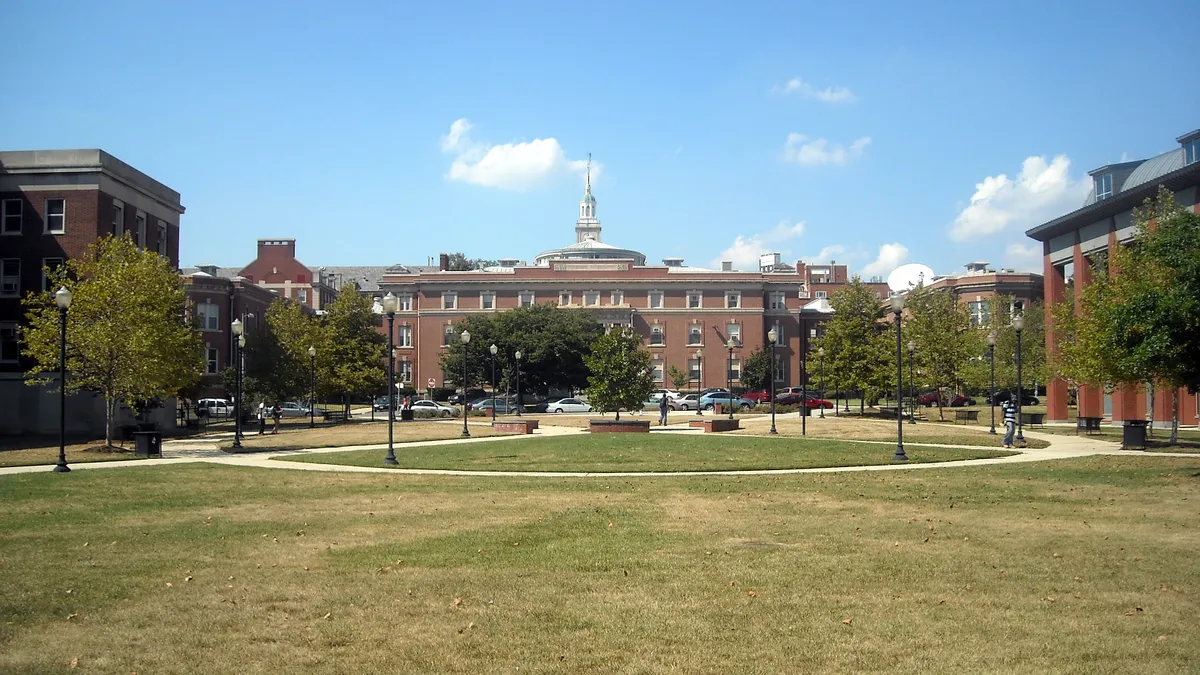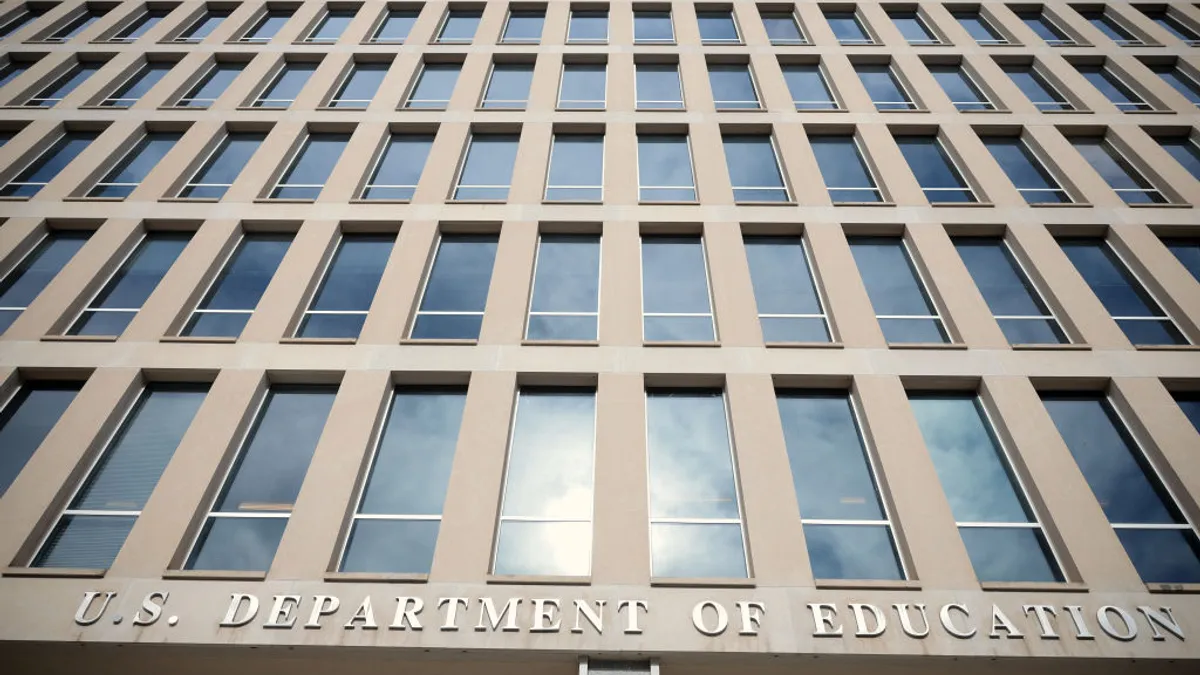In 2018, Howard University landed on the U.S. Department of Education's heightened cash monitoring (HCM) list with a bang.
The decision meant the institution, which was reeling from a massive scandal in its financial aid office, would no longer receive an advance from the Ed Department to cover its students' financial aid. Instead, Howard would need to put its own money down and ask for reimbursement.
In a letter explaining its decision, the department cited "serious administrative capability issues" at the university, identified in audits from 2015 through 2017 and again during a program review in 2018. Among those issues were a lack of internal financial oversight and shoddy accounting practices.
To shed the sanctions, the university would have to make significant changes. And it did, by the Ed Department's analysis. In December, the federal agency dropped Howard from the list entirely. While that announcement flew mostly under the radar, the university's relatively swift turnaround highlights the bind that lesser-resourced institutions can find themselves in when it comes to the steps they must take to get off the list.
Howard spent more than a year on the department's HCM list. Most of the time it was under the more severe of the agency's two sanction levels. Meanwhile, eight of the 19 nonprofit U.S. institutions on the list as of December 2019 had been there since at least 2017. In all, there were 210 domestic nonprofit postsecondary education providers on one of the two levels at the end of last year.
"Some of these other colleges simply just may not be able to make the changes they need to because they don't have the resources," said Robert Kelchen, a higher education professor at Seton Hall University, in an interview with Education Dive. "Basically, they're on the list because they don't have money, and getting on the list makes it even harder to get off the list."
'Not punishing the students'
The department's HCM restriction has two levels. The less-severe is HCM1, under which the Ed Department more heavily scrutinizes a college's finances but still advances it student aid funds.
On HCM2, however, schools don't receive advances. Instead, they must pull from their own resources and request reimbursement from the department.
Those schools still would need to create "a seamless environment … where the students don't know that the school is on HCM," Jill Desjean, a policy analyst at the National Association of Student Financial Aid Administrators (NASFAA), told Education Dive in an interview. In other words, she continued, "not punishing the students for whatever issues the school is being punished for, whenever possible."
After the department placed Howard on HCM2, it took three steps to ensure that being on the list didn't delay students' aid, Alonda Thomas, a spokesperson for the university, told Education Dive in an email last week.
Nearly all of its students receive some form of financial aid, according to federal data. About half (49%) got Pell Grants, while slightly more (59%) received federal student loans in the 2017-18 academic year. At the time the university was placed on the list, more than $31 million in financial aid funding was affected for the upcoming semester, officials told The Washington Post.
For students whose Title IV aid covered their costs, federal funds were applied after the department approved them. Students who had a credit balance — meaning they'd get a refund from the school, which is often used to pay for living expenses — received a short-term allowance for the same amount from the university.
In August 2018, the university increased its existing $75 million line of credit to $100 million. "The line of credit was used to bridge gaps between weekly cash inflows and outflows caused by the delayed receipt of federal student aid reimbursement to do the HCM2 process," Thomas wrote.
Howard took additional steps to address the department's concerns about the state of its financial aid oversight.
That included hiring a new financial aid director and increasing staffing in the financial aid office. It also raised scrutiny over how financial aid awards are reviewed and approved, and it narrowed access to the financial aid system to "a small number of appropriate senior University individuals," according to a news release explaining the changes the university made since April 2018.
The university also fired six employees after an internal probe found they misused $369,000 in financial aid funding, according to an April 2018 report.
"They were able to demonstrate that they had really battened down the hatches, and they took this quite seriously because of course they didn't want to be on heightened cash management for an extended period of time," said Sue Menditto, senior director of accounting policy at the National Association of College and University Business Officers, in an interview with Education Dive.
Howard President Wayne Frederick, in a statement in December, credited the university's leadership and its financial aid office for quickly implementing the changes.
In September 2019, the Ed Department downgraded Howard to HCM1, and in December it took the university off the list entirely.
Getting off the list
Not all schools have the capacity to react so swiftly. In many cases, colleges lack the financial resources to make the changes needed to get credit from a bank or to cover students' financial aid, Kelchen said.
Eight postsecondary education providers have been on HCM2 since at least 2017. Two HBCUs, Cheyney University of Pennsylvania and Arkansas Baptist College, are among them. Wiley College, also an HBCU, has been on the list since June 2018. It was previously on HCM1 in late 2015 and early 2016.
Cheyney University and Wiley College did not grant Education Dive's request for an interview. Cheyney, a public university, has been improving its financial position, however, according to a local media report.
The steps schools take to get off HCM2 will vary based on their situation, but freeing up resources is critical to making the required changes.
That can be a particular hardship, for instance, if the situation that got the school on the list also damaged its reputation, as it may render banks reluctant to extend or expand credit to the institution.
"Some of these other colleges simply just may not be able to make the changes they need to because they don't have the resources."

Robert Kelchen
Professor, Seton Hall University
Asking donors to adjust the terms of past gifts is one option, and it is something institutions did at the depth of the Great Recession. "You certainly can go to those donors and say, 'This is the situation, we need your help,'" Menditto said, though she notes that she hasn't heard many stories about alumni rallying to help an alma mater placed on HCM.
In general, however, alumni have helped troubled schools bounce back. Trustees have also sometimes stepped in to donate or help secure the necessary resources.
Still, she said, institutions may be reluctant to publicly call attention to their precarious financial situation. This was evidenced earlier this year when pushback from colleges caused a company not to release a list foretelling when institutions might close.
"There's a business psychology to it as well," she said. "They're fearful of the story getting out, perhaps."
Getting off HCM2, in particular, is a resource-intensive process. For some nonprofit institutions, that can perpetuate the financial problems that put them on the list in the first place.
"That is a valid concern," NASFAA's Desjean said. But, she added, "there aren’t a lot of other ways to address the problems that (the department) may have identified."

















